














Dear CNAR Community,
In October, we concluded the 17th Annual CNAR Conference in picturesque Ottawa, Ontario. We were extremely proud to bring together over 900 regulators (both in person and online) from coast to coast, welcoming presenters and attendees from Newfoundland to the Yukon. It was a great pleasure to see so many of you there and have the opportunity to discuss important topics facing those working in professional regulation in Canada. I learned a great deal from you and look forward to continuing those discussions in 2025!
At the Conference, we were also very pleased to present a session based on our inaugural round of funding to CNAR’s Research Program. This last month, CNAR released the comprehensive report, Public Interest Regulation in a Digital Age: Challenges and Opportunities by Tracey L. Adams and Kathleen Leslie, marking a very significant strategic milestone for CNAR. The CNAR Board and staff have long championed the Research Program, and we were thrilled to award the first round of funding last year, generating compelling original research specifically designed for
those in professional regulation in Canada. Our first full 2024 Research Program Report (and the session recording from CNAR 2024), which explores how technological advancements are reshaping professional regulation in Canada, is now available in both English and French in the CNAR Portal.
As results become available, we will provide more details on the latest research initiative that is currently in progress and spearheaded by Dr. Zubin Austin. We look forward to launching the 2025 Research Program funding application in late January.
As we come to the end of 2024, the CNAR Board of Directors wishes to thank you for your ongoing dedication and commitment to CNAR. You all help us move forward in our shared goal of achieving regulatory excellence.
Sincerely,


Alice Kennedy Board Chair, CNAR
Dear CNAR Community,
Over this last quarter, we have been working on some very exciting initiatives to improve member experience and ensure our growing library of resources is easily accessible to all in our community. We recently launched a new Portal Resource Centre, which allows our members and Partners to easily navigate our eBooks, white papers, and a collection of recorded material by keyword or theme. I encourage you to take a moment to review the available resources – and be sure to add all your staff to the Portal and fully leverage your CNAR membership!
We have also recently opened our 2025 member renewal applications. We look forward to continuing to collaborate with our over 200 CNAR member organizations, which represent thousands of people in professional regulation all across the nation.
Earlier this year, we launched our new tagline, Achieving Regulatory Excellence Together. It is the word ‘together’ that truly distinguishes CNAR and our community. We are both humbled and grateful for the contributions of dedicated members,
volunteers, speakers, Partners, and sponsors who come together – online at events and through the discussion boards, as well as in person at our Annual National Conference – for the betterment of the Canadian regulatory community.
We are also gearing up to launch our Call for Conference Speakers in January 2025. As we are constantly searching for diverse stories from across the country from different professions, we hope you will consider submitting a proposal. Please spread the word and mark your calendar for CNAR 2025, which will take place October 20th-22nd in Calgary, Alberta! Every voice at CNAR brings a tremendous wealth of knowledge and we look forward to hearing your story.
See you next year.
Sincerely,


Alyson Gaffney Executive Director, CNAR


THANK YOU FOR JOINING CNAR THIS YEAR AT THE 17 TH ANNUAL CNAR CONFERENCE IN CANADA’S PICTURESQUE CAPITAL!
We were extremely proud to bring together over 900 regulators (both in person and online) from coast to coast to learn from each other and exchange best practices in professional regulation.
Reminder: All sessions presented at CNAR 2024 were recorded and are available to all attendees for playback on the event platform and the app for six months post-conference (April 9th, 2025).
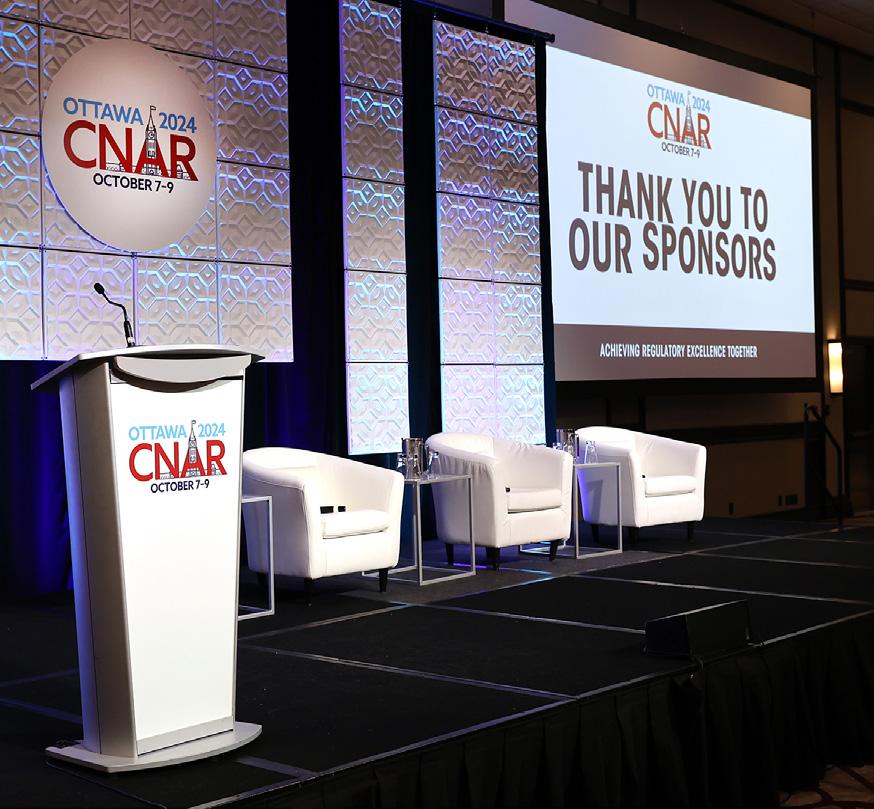









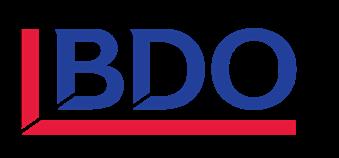

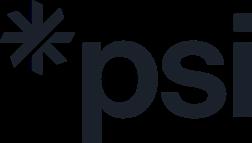










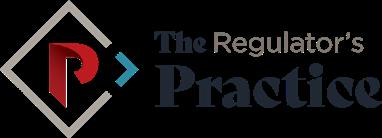

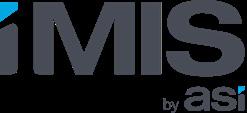

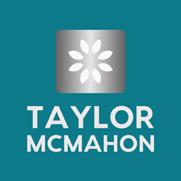



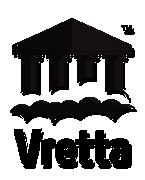

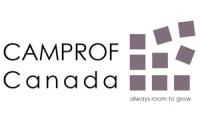




Thank you for being a valued part of CNAR’s dynamic network of regulatory professionals. Your dedication to excellence in regulation is invaluable! We’re very grateful for your ongoing support and engagement.
By continuing your connection with CNAR, you’ll retain your access to professional development in regulation opportunities, cost-saving benefits, and an extensive library of learning resources—all designed to support your critical work in the regulatory field.

Renew with CNAR today to continue accessing our robust library of resources and engage in discussion with your peers!
*Organizational level is based on the
Exclusive Access to Learning Resources:
Discover whitepapers, eBooks, event replays, and webinars covering essential topics like AI, DEI, Truth & Reconciliation, governance, and much more.
Expand Your Network:
Connect with peers, share insights, and build relationships through CNAR’s events and discussion forums tailored to regulatory professionals across Canada.
Enhance Your Professional Practice: Take advantage of tools and resources that help you stay ahead of trends, tackle challenges, and achieve regulatory excellence.
RENEW BEFORE JANUARY 1ST, 2025
Join us on December 4th for CNAR’s final Virtual Discussion event of the year!
Drawing on their deep experience in assessment, measurement, and psychometrics, our panel will discuss hot issues and trends in testing. They will also share insights from CNAR’s white papers on testing, including the recently released Examples of Defensible Psychometric Exams.
Topics of discussion may include:
• Competency profile development and assessment of “soft skills” or non-technical competencies.
• Uses of artificial intelligence (AI) particularly in content development.
• Test structure and format and opportunities in technological innovation for assessing competencies.
• Assessment methods for internationally educated professionals.
The conversation will be facilitated by Isabelle Gonthier, Chief Assessment Officer, PSI Services and CNAR Board Director.
The Virtual Discussion forum is getting a new look!
The Regulatory Roundtable (formerly known as Virtual Discussions) will begin in 2025!
This event is free to all CNAR members and $50 for non-members. Registration is now open!
Date: December 4, 2024
Time: 12:00 PM ET – 1:00 PM ET
Venue: Zoom (link to be sent out prior to event)
REGISTER HERE
Panelists are:




Chris Beauchamp Vice President, Psychometrics, Meazure Learning
Natasha Parfyonova Senior Manager, Psychometric Services, Meazure Learning
Greg Pope Psychometrician and Partner, Spire Psychometrics
Greg Sadesky Psychometrician and Partner, Spire Psychometrics
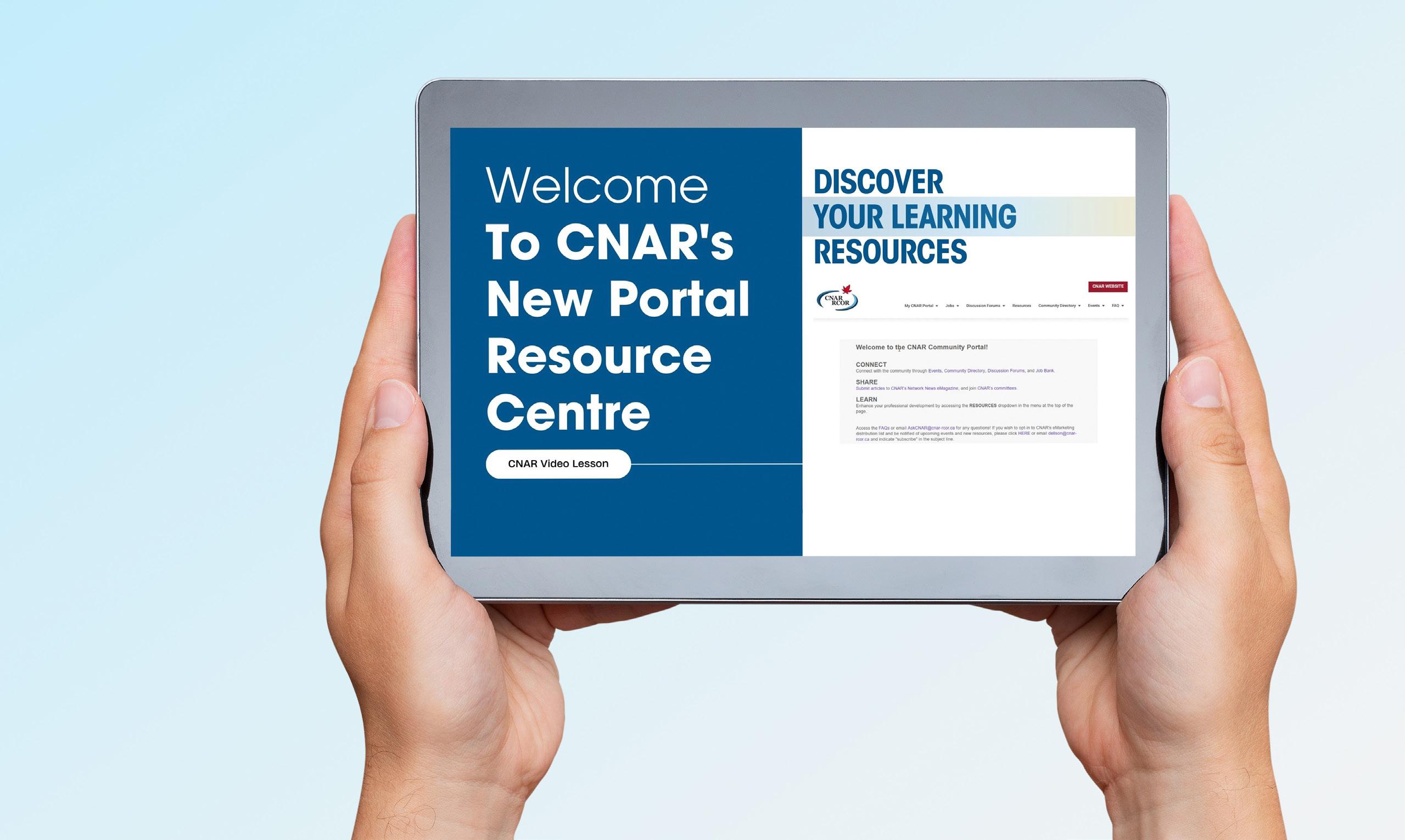
With our newly launched Portal Resource Centre, the CNAR community can now:
Save Valuable Time: Access What You Need, When You Need it
Learn Your Way: Search by Format or by Topic
Professional Development at Your Fingertips: Whitepapers, Event Replays, eBooks & more!
Whether it’s AI, DEI, or the latest in governance best practices, find critical insights whenever you need them.
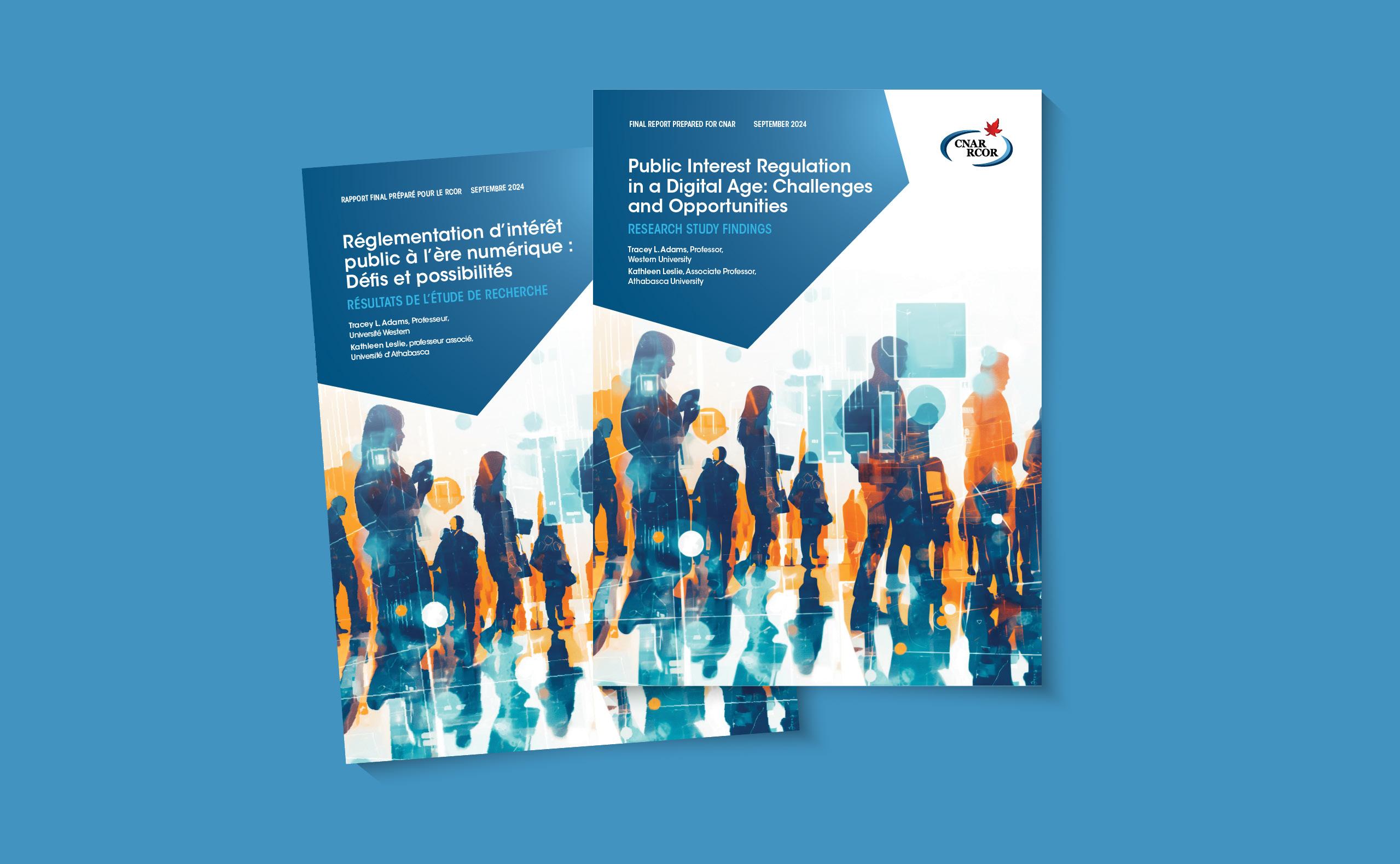
Exclusive to CNAR members and produced with the inaugural round of funding to CNAR’s Research Program recipients Tracey L. Adams and Kathleen Leslie, this compelling new resource Public Interest Regulation in a Digital Age: Challenges and Opportunities, explores how technological advancements are reshaping professional regulation in Canada.
This comprehensive report delves into opportunities and challenges posed by digital innovation, including AI, virtual practice, and data analytics, providing essential insights to enhance regulatory practices and safeguard the public interest.
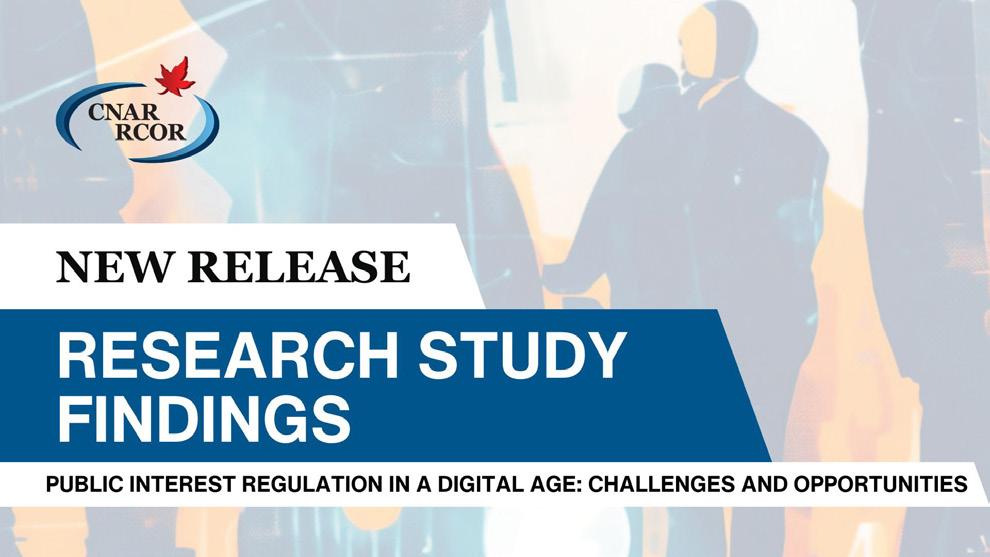
See the video clip to view excerpts from the findings and highlights in the report!
This report (available in English and French), and associated CNAR 2024 session are available on the CNAR 2024 Event Platform, and on the CNAR Portal Resource Centre.
The rapid evolution of technology is reshaping professional practice and service delivery, prompting new discussions about how professional regulation needs to adapt in response. Our study investigated the impact of technological change on regulatory activities, policies, and practices in Canada. This mixed-methods research involved a comprehensive document review, a pan-Canadian survey of 119 respondents, and follow-up interviews with 12 participants. The study was guided by a volunteer advisory committee of experts in professional regulation, providing valuable insights and shaping the research process.
Our research highlights the complex landscape regulators face in adapting to rapid technological changes. We found that technological changes are impacting most spheres of regulators’ activity. While most regulators are proactively implementing changes to address technological risks, the adoption and use of new technologies vary across di erent regulatory bodies. For example, some regulators have established virtual hearings as a default for disciplinary cases, whereas others have not adopted this practice or have reverted to pre-pandemic in-person norms. Similarly, most regulators use data analytics, but the extent and application of those analytics di er significantly.
Despite challenges such as resource constraints and legislative limitations, study participants expressed optimism about technology’s potential to enhance regulatory practices. This optimism extended to artificial
intelligence (AI) and its capacity to improve regulatory e ciency. However, participants also voiced concerns about AI, including issues of accuracy, privacy violations, and a lack of human touch.
Our research draws attention to participants’ uncertainty about how to regulate in this complex landscape where the potential benefits of technological advancements must be weighed against the risks they may introduce. The areas of most uncertainty in our research included how to regulate AI use by practitioners and whether a specific duty regarding technological competence was necessary.
We found that the impact of technological change di ered by the size of the profession, jurisdiction, and other factors. As a result, there may be few “one-size-fits-all” policy solutions. Instead, more collaborative e orts among regulators, along with education and training focused on responsible technology use (including AI) for both regulatory sta and registrants, are important strategies for navigating the complexities introduced by technological innovations. Regulatory bodies can work together to create evidencebased frameworks that balance technological progress with risk management while preserving the essential human elements in regulatory activities.

By Dean Benard, Benard + Associates

In recent years, the landscape of professional regulatory investigations has experienced profound changes. Factors such as increased complexity, higher caseloads, heightened resistance to cooperation, and evolving expectations from involved parties have collectively intensified the challenges faced by regulatory bodies and their investigators. Consequently, navigating this increasingly demanding environment requires the adoption of new strategies and approaches. Central to this adaptation is a steadfast commitment to continuous learning and application of best practices.
So, with all this in mind, what are the ingredients to a good investigation? First, let’s take a closer look at the challenges, then we can discuss the solutions, and answer this question.
The complexity of cases in professional regulatory investigations has escalated, fueled by a variety of factors including complaints involving aged issues, where faded memories are more common, information is harder to obtain, or witnesses must be located. Greater prevalence of multifaceted matters including, crossover of conduct and practice related concerns, interdisciplinary issues involving members of multiple professions, the continuous evolution of professionals’ scope of practice, and parallel criminal or employment investigations all increase the challenges posed to investigators. These complexities demand that investigators possess specialized knowledge and skills to decipher and address the multifaceted issues they face, resulting in each case taking more effort and more time to complete.
Alongside increasing complexity is a noticeable increase in the volume of cases needing attention. This surge can be attributed to greater public awareness of regulatory complaints processes, and heightened expectations of accountability in professional practices. The growing number of cases places additional pressure on investigative teams to manage their resources efficiently and prioritize cases effectively to maintain the integrity and timeliness of investigations.
In today’s digital age, while obtaining information has become more accessible in some ways, it has also introduced new challenges. Privacy concerns, cybersecurity risks, and the sheer volume of data can impede timely access to necessary information. Additionally, regulatory investigators often face legal and procedural hurdles that can delay or restrict access to critical data needed for thorough investigations. Investigators are increasingly confronted with various forms of non-compliance that require a deeper understanding of technical and legal nuances. In contrast they also face the uninformed refusals to comply based on misunderstandings of professionals’ governing legislation and privacy legislation. Again, this necessitates additional efforts to overcome opposition such as more frequent and deeper use of formal powers of investigation. Where these powers don’t exist or where they fail, means the investigator will need to find creative ways around the issue or sometimes proceed without some information.
Participants in regulatory investigations, including the subjects of investigations and complainants now have higher expectations for transparency, fairness, and speed in the resolution of cases. These heightened expectations require investigators to not only be efficient and thorough in their investigations but also communicative and responsive to the concerns of all parties involved. While this is understandable, there has also been a proliferation of unreasonable
demands based on misinformation, often through social media. In addition, there are numerous cases where the reasonableness of complainants, registrants, witnesses, and even some legal representatives is absent, and the incidence of outright abuse toward investigators, outrageous demands, threats, and general lack of cooperation is on the rise.
So, with all these challenges, what can we do to ensure a complete, accurate, fair, and efficient investigation? In other words, how do we complete a good investigation.
The first consideration here should be to define what constitutes a “good investigation”. Presumably most people would agree on the following characteristics of a good investigation:
• Clear procedures that ensure consistency, fairness, and neutrality
• Open communication that explains process and addresses questions.
• Thorough evidence collection
• Adherence to legal and ethical standards
• Well documented investigation file and a clear and neutral report
• Trauma / human informed processes applied throughout the process
• Completed in a timely and efficient manner
All the above will not be achieved by simply following a process. There are many nuances to this work that require an ability to apply a wide range of skills, and knowledge, sometimes at a moment’s notice. Add to this the range of challenges outlined above, and the common collective answer is to say, “We need to apply best practices.” But what are best practices, and who decides on that?
Advances in our knowledge of trauma informed practices, evolving technologies, sourcing of information, and the case law that informs our work as investigators, is part of maintaining our investigation practice at the highest level. However, investigators must guard against misinformation or allow a hot button topic to override the key practices of investigations that lead to success. All these things should enhance investigations, not create pendulum swings in practice that lead to overemphasis in some things and ignoring others.
It is essential for investigators to clearly understand their role within the regulatory framework. This understanding helps prevent overstepping boundaries and ensures that investigations are conducted impartially and professionally. One area where investigators can easily overstep is when they offer opinions or conclusions related to the information they gather. With few exceptions, regulatory investigators are fact finders, not decision makers. The concept of credibility assessment is a good example of this. Regulatory investigators can and should assess credibility for the limited use of determining other investigative steps. The idea that the investigator should comment on credibility, even in the classic scenario of one person’s word against the other, is incorrect. Under a regulatory mandate the only place credibility assessment should be happening as a determinant of a case is in a hearing. Pointing out conflicting information is fine, but determining what information should be given more weight, is not the job of the investigator in a regulatory investigation. Investigators must stay in their lane.
Effective planning has become more essential than ever. This involves setting clear objectives, defining the scope of the investigation, and allocating resources strategically. Planning helps investigators manage large volumes of cases and complex issues more efficiently, ensuring that each step of the investigation is targeted and effective. The plan is a living document that investigators should add and subtract from as the case progresses.
One of the biggest flaws in any investigation is the failure of an investigator to peel back the layers of the onion. Investigators ask questions and each answer will typically lead to more questions. When investigators avoid the follow up questions or fail to go deep enough, they miss the full story.
Here is an example:
Witness: “He always cuts corners.”
Investigator: “What do you mean when you say cuts corners?”
Witness: “You know, he doesn’t follow protocol.”
Investigator: “What parts of the protocol does he not follow?”
Witness: “He’s lazy.”
Investigator: “Can you explain what you mean when you say he’s lazy?”
Witness: “Well, he doesn’t do things properly, he cuts corners.”
Investigator: “Right, I hear what you are saying about him cutting corners. Can you help me understand the specific things he does that lead you to believe that?
….and it goes on
This is a simplistic example, but in cases involving sexual or physical abuse by a healthcare provider or a serious fraud allegation against a financial advisor, the level of detail is critical to getting ALL the information required.
Overlooking or misinterpreting even a small piece of evidence can lead to insufficient information for the decision maker to draw correct conclusions. Meticulousness ensures accuracy, and comprehensiveness in gathering and analyzing evidence is critical.
Investigators must have a thorough understanding of their legal powers and the ethical implications of their investigative practices. This knowledge ensures that investigations are conducted within legal boundaries and that the rights of all parties are respected, while also using the powers available to get what is needed.
Adopting trauma-informed approaches enhances the investigation process and can help the emotional and psychological states of those involved. This approach not only facilitates more effective communication but also enhances the reliability of the information gathered. Trauma has an impact on memory, emotional responses, a sense of safety and security, and trust in the process and the investigator. In addition, the lived experiences of many marginalized groups lead to many of these impacts. We must earn peoples’ trust by applying an approach that includes empathy, and avoidance of re-traumatizing and re-victimizing those we deal with. Even when the investigation is thought to have been thorough and complete, the feelings of those involved will typically overshadow the outcome.
The comment earlier in this article on dealing with unreasonableness, has necessitated investigators to develop even better approaches to managing challenging behaviour. Investigators must have well developed communication skills and the ability to deescalate behaviour and situations. Much of the skill in this regard is the ability to prevent these escalations through careful and strategic communication. So, what is the answer to the question, “What makes a good investigation?” Some would say the answer is – clearly defined, fair and neutral processes. That is part of the answer, but most critical is the investigator’s ability to implement the processes and address the challenges through a mix of skills that are drawn from many disciplines.

By Vita Wensel, Field Law

Every regulator wants to keep evolving. Regulation is not stagnant, nor should it be, to effectively protect the public. In earnestly responding to change, regulators aim to be fair and efficient. The question becomes how does a regulator evolve and find the right balance when doing so? What should a regulator keep in mind when responding to and anticipating changes that impact the public? The framework of right touch regulation is one approach that regulators can apply when determining what their role should be.
Right touch regulation, a conceptual framework in how to approach regulation, was first published in 2010
by the Council for Healthcare Regulatory Excellence (later re-named the Professional Standards Authority), an independent government oversight body for regulators, in the United Kingdom. Since then, right touch regulation has continued to develop and draw popularity as a useful approach. Right touch regulation is a principle-based approach to regulation focused on quantifying and qualifying risk.
The foreword by Harry Cayton in the original report in 2010 describes that right touch regulation is aimed at striking a balance between two often-competing interests in law: freedom and safety. In other words, regulation must strike a balance between overly controlling someone’s life and protecting everyone else. It is easy to oversimplify these conflicting interests, yet they ring true in most areas of regulation.
For example, when considering whether to discipline a registrant for their social media posts, when creating new standards to be responsive to innovation, when taking action against someone without a license who has been passing themselves off as a licensee or when creating new internal policies or procedures.
The undercurrent of right touch regulation is premised on how to balance a registrant’s personal freedom against the risk to the public (including risks beyond physical harm). Finding the right balance between these two competing interests can be a difficult task but it is helpful to not lose sight of them when engaging with right touch regulation.
Right touch regulation does not offer a hands-off approach to addressing risks. Instead, it offers an accessible framework that aims to keep hold of both competing interests outlined above. Right touch regulation draws on existing principles of good regulation: proportionate, consistent, targeted, transparent, accountable and added agility. With these principles in mind, the framework is as follows:
• Identify the problem before the solution;
• Quantify and qualify the risks;
• Get as close to the problem as possible;
• Focus on the outcome;
• Use regulation only when necessary;
• Keep it simple;
• Check for unintended consequences; and,
• Review and respond to change.
The decision-making framework can be helpful to regulators. However, not all approaches to right touch regulation need to be the same. If you are considering right touch regulation in your organization, we encourage you to reflect on the following:
• One size does not fit all. Right touch regulation, and the framework, is not a strict blueprint. They are practical suggestions in decision-making that flow from long-standing principles of good regulation. How a regulator achieves the principles of right touch regulation does not have to look the same. It is possible to meet the principles of good regulation within different scopes or scales. Every regulator should determine what works best, considering what or who they regulate.
• Make it stick. Although right touch regulation principles can be implemented relatively quickly, they should be done in a way that ensures longevity. Implementation falls short where they are not maintained by the regulator. Consistency and agility should go hand in hand when implementing right touch regulation.
• Remain mindful of core regulatory functions. Approaches to right touch regulation should remain focused on the core regulatory functions of an organization. Examples of core functions are licensing, disciplinary processes, development of standards or compliance. Certain roles and responsibilities are created through legislation, and required, for a regulator to meet their statutory obligations. Although right touch regulation offers practical approaches to assessing risk, it should not fetter the statutory obligations or discretion of the regulator. Equally, when faced with new legislation, right touch regulation may be helpful to interpret the updates in a manner that is consistent with the regulator’s obligations and core functions.
• Different approaches help grow the framework. Right touch regulation welcomes debate and improvement. Demonstrated by the updates through 2010 to today, different approaches to right touch regulation can help it improve and benefit all regulators. In considering different approaches, it is helpful to return to the idea that every regulator is offered the privilege of regulating a specialized and specific function or profession because they are in the best position to do so. The specialized knowledge should provide a jumping off point in how right touch regulation is implemented.
• Remain mindful of legal obligations. When implementing right touch regulation regulators should be mindful of legal obligations such as the regulator’s governing legislation, privacy legislation, human rights legislation, administrative law, developments in case law and corporate obligations. Principles of right touch regulation are helpful for a regulator to identify those areas where there is a higher risk of harm, but they do not speak to specific legal obligations. Implementing right touch regulation without considering legal obligations can create further unintended risk for a regulator.
Putting it all together with the example of artificial intelligence, many regulators are faced with the evolution of artificial intelligence (such as large language models like ChatGPT). Artificial intelligence, a clear example of evolution and innovation, may require new standards or guidelines. Sitting down and considering the impacts and benefits of artificial intelligence is important to being responsive and agile. In taking a right touch regulation approach and arriving at an assessment of “risk”, considering the impact on registrants and the potential harm to the public is a helpful starting point.
Some harm to the public is clear, such as false or incorrect information being passed off as accurate. Other types of harm may be more nuanced and if not considered in a proportionate manner, could drift farther outside what is necessary to protect the public. A regulator should turn their mind to specific risks. For example, there are differences between using AI to provide a treatment plan or diagnosis versus using AI in a scheduling and task-management system.
Similarly, using AI to do research that impacts a professional’s advice versus using AI to respond to customer emails in a professional tone may have different implications. The impact on registrants’ freedom is also fact-specific, depending on what the AI is being used for and how it relates to the regulator’s core functions. One regulator’s approach may not fit another and could impede growth and innovation if too wide of a net is cast. In assessing the overall “risk” the right touch regulation framework may help a regulator through conceptualizing their approach and ensuring legal and statutory obligations are considered.
Prior to applying right touch regulation within your organization, it is important to return to its core principles and consider the balance of freedom and safety in assessing “risk”. When implementing right touch regulation, approaches can be different for every regulator. Stepping back and considering core functions and the specialized expertise of your organization may benefit your organization in longevity of being proportionate, consistent, targeted, transparent, accountable, and agile in the work that you do.
If you need assistance with implementing right touch regulation in your regulatory framework, Field Law is here to provide guidance and support. Contact Vita Wensel or any member of our Professional Regulatory Group for assistance striking the perfect balance between protecting the public and fostering innovation within your profession.
This article has been published with the permission of Field Law, and may be republished only with the consent of Field Law. “Field Law” is a registered trademark of Field LLP.

By Sara Levinson, Prometric

Having come to the assessment industry almost four years ago from a conversational AI company, I had the privilege of early exposure to the types of technology being adopted in our industry today.
At this year’s 2024 Association of Test Publishers Conference (ATP), there were perhaps three times as many sessions focused on AI than last year, with many highlighting great success stories. However, in some of the discussions, we heard fear- and risk-focused lines of thinking and AI being talked about in generalities vs. reality. As we continue to understand what AI means for testing and assessment, it’s important to know all AI platforms, much like technology platforms, are
NOT alike. While AI represents a tremendous ethical responsibility, demands evaluation of risk, and requires a series of choices, fear of it won’t serve any of us well.
Generative AI, in particular, represents a significant opportunity for the assessment industry – and not only because of the obvious benefits of creating more content in a shorter amount of time.
A piece of this conversation that I don’t hear many people talking about is the unseen benefit for the working professionals who actually learn to use this technology within organizations. In previous roles, I saw contact center agents’ lives change as they learned how to leverage AI technology to create efficiency, opening up opportunities to learn new skills to make themselves more marketable.
This same opportunity now presents itself to assessment professionals, including subject matter experts (SMEs) and leaders of certification programs using AI products like Finetune. These experts are innovating, pushing boundaries, and creating a new landscape for their roles. They’re doing deeper work because they are getting comfortable with AI – a force that can and will change how we live in this world.
Sara Levinson is Vice President of Business Development at Prometric. She joined Prometric in 2020 after holding previous strategic account roles at LivePerson and Clicktale (acquired by ContentSquare), where she launched transformational technology initiatives with many of the world’s most recognizable brands, including Gap Inc, Disney, Symantec, and many more. Sara is a frequent presenter, moderator, and podcast guest in both the high-tech and ed-tech communities. She holds an M.A. from Carnegie Mellon University and a B.A. in English from Gettysburg College, where she is a member of the Alumni Board of Directors.


By: Gavin Fior, WeirFoulds

In a recent decision, the Supreme Court of Canada considered the applicability of the Canadian Charter of Rights and Freedoms to school boards and, in so doing, concluded that teachers, in their employment relationship with school boards, are protected by the right to be secure against unreasonable search or seizure under section 8 of the Charter. At the heart of the analysis, the Court held that public school boards in Ontario are inherently “governmental” for the purposes of section 32 of the Charter and, consequently, the actions of a school board in carrying out its governmental functions are required to be Charter compliant.
While much has been written about the decision and its impact on privacy rights in the workplace generally, the decision requires a closer read in terms of examining privacy rights in the context of professional regulation and the takeaways for regulators in understanding the ever-evolving reach of the Charter and its role in regulatory decision-making. As always, our analysis of the case starts with the facts.
The case centered on two teachers who had been disciplined by their school board employer for maintaining a private “log” that the employer (and other employees at the school) contended was creating a toxic work environment and constituted a breach
of the school board’s “Respectful Workplace Policy”. According to the evidence, the log was stored remotely on a cloud-based server in a private account, and it was not accessible or saved to the school board’s server. The school principal had been made aware of the log’s existence and conducted an unsuccessful IT search of the schools’ internal databases. However, later in the school year, the principal visited one of the teachers’ classrooms, to return some teaching materials after class, and found the school board’s laptop was opened and was left unattended in the room. When he touched the laptop mousepad, the log appeared on the screen. The principal then took photos of the log on his cell phone, and the teachers’ laptops were subsequently seized and searched. As a result of the contents of the log, the school board reprimanded the teachers, in writing, for failing to conduct themselves in accordance with the Ontario College of Teachers’ Standards of Practice.
The Elementary Teachers’ Federation of Ontario (the “Union”) grieved the written reprimands, sought to have them rescinded, and requested that each teacher be awarded $15,000 for the breach of their privacy rights. Although the Union argued that the school board had violated the teachers’ right to privacy, it did not explicitly allege a Charter breach as part of the grievance. In terms of the search, the Union alleged three breaches of the teacher’s privacy: (1) the Board’s search of its IT platforms; (2) the principal’s search of the board’s classroom laptop; and (3) the searches conducted after the board seized both laptops. Ultimately, the arbitrator dismissed the Union’s grievance and concluded, among other things, that there was no breach of the teachers’ “diminished” reasonable expectation of privacy in the log when balanced against the board’s “legitimate interest” in addressing the issue of the toxic work environment allegedly caused by the teachers. The arbitrator’s decision was upheld on appeal to the Divisional Court, with the majority holding that the framework for analysis was not section 8 of the Charter, but rather the rights of employers and employees under the collective agreement.
The Union appealed the Divisional Court’s decision to the Court of Appeal for Ontario. In its decision, the Court of Appeal quashed the arbitrator’s decision and concluded that (1) section 8 of the Charter applied to
the actions of the principal and the school board; (2) the teachers had a reasonable expectation of privacy; (3) the arbitrator erred in interpreting and applying the law concerning the teachers’ Charter right; and (4) the arbitrator reached an unreasonable decision.
On appeal to the Supreme Court, the school board argued that the Charter did not apply, and school board employees do not have an expectation of privacy guaranteed by section 8. It also argued that even if section 8 jurisprudence was applied, the search was reasonable in the circumstances.
The Supreme Court dismissed the appeal, holding that:
1. The Charter applies to public school boards in Ontario operating under the Education Act given the inherently governmental nature of public education, as set out in section 93 of the Constitution Act, 1867 and section 23 of the Charter. 1 Accordingly, school employees, including teachers, have a right against unreasonable search and seizure in the workplace that is protected by section 8 of the Charter; and
2. The arbitrator failed to engage in an adequate section 8 analysis. The majority rejected the argument that the arbitrator had functionally engaged in a section 8 analysis by referencing relevant principles and jurisprudence and held that there must be clear acknowledgment and a fulsome analysis of a Charter right when it arises2
Of note, the majority found that the less deferential correctness standard of review applied to the question of whether school boards were subject to the Charter. It also held that the correctness standard applied to the arbitrator’s reasons in determining the scope and application of a Charter right, noting: “the issue of constitutionality on judicial review — of whether a Charter right arises, the scope of its protection, and the appropriate framework of analysis — is a ‘constitutional question’ that requires ‘a final and determinate answer from the courts’.”3
1 York Region, at para 79
2 York Region at para 94
3 York Region, at para 63
Having concluded that the arbitrator erred in law, the Court then noted that the proper remedy, in the usual circumstance, would be to set aside the arbitrator’s decision and to send the matter back for further consideration by the arbitrator – applying the proper analysis to determine the Charter issue. However, during the intervening period while the appeals were ongoing, the reprimands had been removed from the teachers’ employment files by operation of the “sunset clause” in the collective agreement. Consequently, the matter was now moot and would not be dealt with further.
As a result, by way of obiter, the Court went on to consider the arguments raised by the parties and dealt with by the courts below to provide some general guidance on the section 8 analysis for (1) determining the reasonable expectation of privacy and (2) the reasonableness of a search. Of significance, the Court noted that criminal law jurisprudence on section 8 should not be indiscriminately imported into non-criminal matters. The analysis under section 8 is contextual, needs to be adapted to the occupational context, and whether or not state action has interfered with the individual’s reasonable expectation of privacy is to be determined based on the “totality of the circumstances”.
(i) Courts will be less deferential where the Charter applies
As noted in the minority reasons, the Court in York Region seems to have given little deference to the arbitrator’s analysis despite her familiarity with the Education Act and the operational realities of working in the education system.4 Consequently, regulators should be aware and cautious moving forward that administrative decisions involving the scope of the Charter rights may be subject to less deference. Courts will apply a correctness standard of review to decisions as to whether Charter rights are engaged, however, the question remains as to whether this less deferential standard will be applied in evaluating whether Charter right in question has been infringed.
Administrative Decision-Makers should be proactive where Charter issues arise
Even where a party does not explicitly raise the Charter, reviewing courts will expect administrative decision-makers to explicitly consider whether a Charter right is implicated, and expect such decisions makers to engage in a full and robust Charter analysis. Notably, this issue was explored by Kelsey Ivory in Bilingualism in the Tribunal Settings in her discussion of the Court’s decision in Commission scolaire francophone des Territoires du Nord-Ouest v. Northwest Territories (Education, Culture and Employment)5. Similar to the circumstances in York Region, the Court held that decision-makers must address Charter values even if they are not raised by parties.
The Court’s reasons also seem to place great emphasis on the form and framework (as opposed to functionality) of the arbitrator’s reasoning and the lack of explicit reference to a constitutional / section 8 analysis. The decision is a valuable reminder on the importance of reasons and that administrative decision-makers should make explicit reference to any constitutional or Charter analysis they are conducting.
As employees in the Ontario public schools, teachers were found to have section 8 right to be free of unreasonable search and seizure within their workplace. While the Court was only addressing the issues of school boards, school boards are not the only workplaces in Ontario that could be considered “governmental” for purposes of section 32 of the Charter or where regulated professionals, like teachers, work. As noted by the Court in York Region, it may be determined that an entity is “government” for the purposes of section 32 where, by (1) its very nature or (2) the degree of governmental control exercised over it, the entity is akin to a government. Under this branch, where the entity is found to be “government”, the Charter applies to all its actions.
While it is a given that the actions of regulators are subject of Charter scrutiny, regulators should also
4 York Region, at para 122
5 Commission scolaire francophone des Territoires du Nord-Ouest v. Northwest Territories (Education, Culture and Employment), 2023 SCC 31
be mindful of the Charter obligations that may now be imposed on other entities who have reporting obligations to the regulator or where their registrants are engaging in their practice. The York Region decision, particularly the Court’s comments in obiter, do not specifically address how an expectation of privacy in the workplace may impact the school’s supervisory role over its employees, and in turn, may impair or impact a regulator’s ability to regulate its registrants. In large measure, the Court’s analysis and comments focused on the labour relationship and workplace context without discussing the implications within the regulatory context. In our view, it is an important aspect of the contextual section 8 analysis for decision-makers to consider the lens of the professional regulatory body.
While this decision is notable because it extends the scope of the Charter to Ontario school boards, the question as to whether the Charter applies to searches conducted under regulatory regimes has, in large measure, been answered. For example, it is firmly established that the Charter applies to regulatory searches conducted under the Regulated Health Professions Act. That said, a person’s reasonable expectation of privacy varies depending on context – and context for regulated professionals is key. The Supreme Court of Canada has made clear that professional regulatory bodies’ statutory powers should be interpreted broadly, emphasizing the “onerous obligation” on them to protect the public.6 In relation to their professional activities and in particular matters that are relevant to an investigation, regulated professionals cannot therefore expect a high degree of privacy. 7 In Sazant, the Ontario Court of Appeal emphasized that a regulated professional’s expectation of privacy in relation to an authorized investigation is “limited”.8
6 Pharmascience Inc. v. Binet, 2006 SCC 48 at paras 36-38
7 Fagbemigun v College of Physicians and Surgeons of Ontario, 2023 ONSC 2642 at para 40
8 Sazant v. College of Physicians and Surgeons of Ontario, 2012 ONCA 727 at para 167
CNAR members, Partners, and Suppliers can post and view jobs anytime, free of charge!
The following positions are currently active in the Job Bank located in the CNAR portal:
• Manager, Practice Review (Calgary or Edmonton)
• Senior Communications Specialist (Edmonton)
• Policy Consultant (Vancouver)
• Executive Director/Deputy Registrar, Education and Strategy & Guidance (Vancouver)
• Indigenous Navigator & Restorative Resolution Consultant (Vancouver)
• Manager, Program Development and Evaluation (Etobicoke)
• Communications Coordinator/ Coordonnateur(trice) des communications (Toronto)
To contribute content or subscribe to CNAR’s NETWORK NEWS, please contact Alana Coleman, Director, Marketing and Communications, at acoleman@cnar-rcor.ca.
